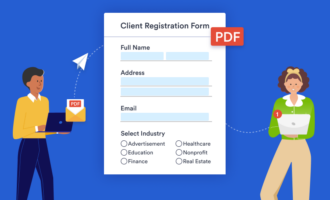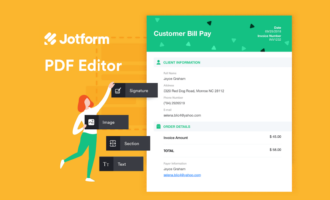It was 1995 and the universe was deep in battle…
A fearsome empire was striving for world domination and crushing their competitors with an iron fist.
Their strategy?
Embrace, extend, extinguish.
Meanwhile, an impertinent upstart was lurking in the wings — one that would eventually bid to overcome the empire.
The upstart’s motto?
Don’t be evil.
Ok, this might sound like the intro to a superhero movie.
But it’s the tale of two of the mightiest corporations of all time: Microsoft and Google.
The killer twist?
The good guys turned to the dark side.
They took Microsoft’s rallying cry and made it their own.
Standards exist for a reason
I’m sitting in my favorite coffee shop as I write this. Their lattes are strong and the wifi is speedy.
Of course, once in a while, I have login problems, or poor data speeds — but it’s rare.
It’s rare because hardware manufacturers and software developers have agreed on a standard. In fact, a few of them: as Andy Tanenbaum said,
“the nice thing about standards is that you have so many to choose from.”
Our modern world relies on people agreeing to work by common rules. And in the online sphere, this begins with open standards. As the principles state:
Open standards make it possible for the smallest supplier to compete with the largest. They make data open for any citizen to audit. They unlock the transformative power of open source software.
Think of good old plain text files.
For the English-speaking world, the underlying standard is ASCII, which sets down the rules for encoding the alphabet as 0s and 1s.
Now, imagine a universe in which you had to pay a $1 licensing fee every time you wanted to read or write a text file in ASCII. It would be a nightmare, right?
Luckily, that would never happen. Because we have rules.
But sometimes, people try to game the system
Take HTML, the standard language for writing web pages, invented in the ’90s by Tim Berners-Lee.
The HTML specification has evolved over the years, and the W3C acts as a forum for gaining specification consensus from large players such as Adobe, Apple, Google, Intel, and Microsoft.
But there’s been a history of skirmishes, with different companies proposing their own variants. During the first browser wars, Netscape proposed a <blink> tag, while Microsoft came up with <marquee>, which was meant to cause text to scroll in various directions.
There’s no problem with that (apart from lousy aesthetics), right? Wrong. Because only Netscape Navigator knew what to do with <blink>, and only Internet Explorer knew what to do with <marquee>.
They were modifying a standard so that it would only run with their software.
They were trying to build a monopoly.
The quest for domination
Microsoft famously coined the phrase “embrace, extend, extinguish” to describe their strategy for dominating markets where competitors benefited from open standards.
Here’s an example of how it played out.
Back in the day, the most powerful PC software package was Lotus 1–2– 3. It was the classic killer app for the IBM PC and Microsoft’s MS-DOS operating system.
To overcome Lotus, Microsoft knew it had to embrace what made the product unique. This meant it had to load Lotus files and the macros that came with them. Enter Excel, a spreadsheet program that initially ran on Macs.
The functionality of Excel was as similar to Lotus as it could be without being a blatant rip-off. So close, in fact, that people could switch from Lotus to Excel with minimal pain.
What’s more, Microsoft used the graphics capabilities of Macs to equip Excel with a cool GUI. This was a leap ahead of standard MS-DOS packages like Lotus 1–2–3.
Next, Microsoft extended by creating Office: the holy trinity of Excel, Word, and Powerpoint, all running together on Windows. By 1995, these programs were working together well, and although there were a number of word processors to choose from, there weren’t any compelling competitors for Excel on Windows.
Microsoft sharpened their competitive edge with company discounts and clever Office 95 marketing, and as a result, most major businesses were adopting it as their standardized software suite — and Excel was part of the bundle. No need to buy a standalone package like Lotus 1–2–3.
Meanwhile, Symphony — the Lotus integrated package for MS-DOS that aimed to compete with Office — never prospered and was eventually abandoned. Microsoft had officially extinguished Lotus 1–2–3.
They wanted Office to become the gold standard for productivity software. And they succeeded. But not long after establishing the dominance of their desktop operating system, Microsoft realized that another challenge was looming.
The World Wide Web was becoming wildly successful, to an extent that few people had foreseen.
Not only could people browse websites that were outside Microsoft’s control, but Netscape introduced the JavaScript scripting language which allowed developers to write code that ran in the browser. In effect, Netscape was inventing a new operating system, distributed between the client-side browser and the remote server.
Even worse, content on the web was platform-agnostic: browsers worked just fine on Macs and Unix as well as Windows, so an application that ran in the browser would rip open the Microsoft business model.
In order to get a piece of the action, Microsoft launched Internet Explorer (IE) in 1995 as a direct competitor to Netscape Navigator. Initially, it only had a tiny market share: less than 10% by the close of 1996. So this was more of an air kiss than a full embrace of the internet.
Things heated up with the release of IE3, bundled as a free component of Windows in 1996, and integrating a number of apps that were part of the Microsoft ecosystem: an internet mail client (later to become Outlook Express), an address book, and the Windows Media Player. IE4 continued the extend theme by bundling programs for the chat and video conferencing.
At the same time, Microsoft re-engineered the Windows desktop look and feel to make it more like browsing a web page. How did Netscape Navigator fit into this cozy set up?
Not at all — it functioned increasingly worse on the Microsoft operating system. By the end of the decade, Internet Explorer had 86% of the browser market.
– Game over for Netscape.
Today, Microsoft is working hard to shed its ‘evil’ reputation, contributing to open source and supporting open standards.
But we may have a new villain on our hands…
Google: the new king of Embrace, Extend, Extinguish
It was March 31, 2004.
The headlines were in a frenzy:
Google, the dominant Internet search company, is planning to up the stakes in its intensifying competition with Yahoo and Microsoft by unveiling a new consumer-oriented electronic mail service.
At the time, the news seemed outrageous. A search engine company? Launching a free email service? With an alleged storage capacity of 1GB — 500 times bigger than what Microsoft’s Hotmail offered?!
In fact, when April 1st rolled around and Google issued a press release officially announcing Gmail, most people took it as a far-fetched hoax.
But Gmail was no April Fool’s Day joke.
Boasting massive storage, a slick interface, instant search, and personalization options, it was real — and revolutionary.
Not only did Gmail blow Hotmail and Yahoo Mail out of the water, but it was also the first app with the potential to replace conventional PC software.
According to Georges Harik, who was responsible for most of Google’s new products at the time:
“It was a pretty big moment for the Internet. Taking something that hadn’t been worked on for years but was central, and fixing it.”
Google had officially extended email. And, while they didn’t extinguish other email providers entirely, they certainly came close.
Then there’s AMP. The Accelerated Mobile Pages Project (AMP) is a technology that enables web pages to load more rapidly on mobile devices.
AMP was originally targeted at news publishers, to compete with Facebook’s Instant Articles, but it has now far outstripped the latter, after being adopted by platforms such as Reddit, Twitter, and LinkedIn
As a strategy, AMP is Google’s most brazen. It serves as a vehicle for routing users through the Google Content Delivery Network even if they’re reading content from other websites. Sites that don’t adopt AMP get pushed out of Google mobile search results and into oblivion.
Or, extinguished.
There’s also the infamous case of Google Reader, which dug the grave for RSS (Rich Site Summary).
RSS’s decline was evident before Google axed it, but killing Reader dealt a massive blow to any of RSS’s remaining momentum. Google said themselves they wanted to consolidate users onto the rest of their services — none of which support any open syndication standards.
Tech writer Ed Bott summarizes eloquently:
“The short life and sad death of Google Reader tells a familiar story of how Google swept into a crowded field, killed off almost all credible competition with a free product, and then arbitrarily killed that product when it no longer had a use for it.”
Last but not least, there’s PDF.
PDF was a proprietary format controlled by Adobe until it was released as an open standard in 2008. When it was published by the International Organization for Standardization as ISO 32000–1:2008, control of the specification passed to an ISO Committee of volunteer industry experts. In 2008, Adobe published a Public Patent License to ISO 32000–1 granting royalty-free rights for all patents owned by Adobe that are necessary to make, use, sell, and distribute PDF compliant implementations.
PDFs have a feature that allows forms to be submitted. This feature previously worked on all PDF viewers (such as Adobe Acrobat and Apple Preview). That is until Chrome started their own viewers for PDF files.
As Google’s browser gained market share (now hitting over 60% in the usage stakes), most people began viewing PDFs in Chrome’s native PDF reader. But, here’s the kicker: Chrome doesn’t support all of PDF’s features.
For example, my company, Jotform, has a feature called fillable PDF Forms. It lets you create PDF forms, which you can submit.
So, forms created with Adobe or Jotform’s Free Online PDF Editor often don’t work on Chrome. We have to instruct people to use Adobe Acrobat instead, which creates needless friction.
In a nutshell, Google’s behavior prevents us from investing more deeply in the PDF Forms.
Our feature is being extinguished before our eyes.
So all of this begs the question:
Does Google really support open source?
Google vs. Apple
In 1995, it was Microsoft vs. Netscape.
In 2018, it’s Google vs. Apple.
The only difference lies in strategy. Google is playing the long game to take Apple down.
Rather than create products that are a dramatic improvement on Apple’s, they make them almost-as-good, or equally good — and cheaper.
Take Chromebooks. They aren’t as slick and speedy as Macbooks. But they offer similar usability — and you can buy three for the cost of one iPad. Plus, they’re brilliantly marketed.
Or Android. It’s as close a replica to iOS as you can imagine.
Or Pixel. Compared to the iPhone, it has a better camera, faster charging, smoother performance, and a more useful digital assistant, for a lower price.
Google is extending with their growing selection of products, including an Amazon Echo competitor, a smart router, TV, a VR headset, and a list of nest devices. Although these products will work mostly with iOS devices, they will work better with Android phones, and/or the Pixel.
All of these factors make migration look increasingly more promising. Apple has been cutting manufacturing costs while pricing its products ever higher, which means the user experience has plummeted.
Not to mention the scandal that erupted when we learned that Apple deliberately slows older products in a bid to encourage users to upgrade.
All of these factors lay fertile ground for Google to overtake Apple.
In fact, Apple customer loyalty is arguably the only real obstacle in Google’s way. But if enough people get frustrated with Apple’s pricing strategy, it could signal the end of Apple’s reign as we know it.
The drive for innovation
Twenty years ago, the browser wars were raging.
There was stiff competition — and that was a good thing because it prevented a monopoly.
With competition comes innovation. In fact, this period of intense rivalry led to the web we have now.
But today? The startup culture is less “what can we build next?” and more “what’s our exit strategy?”
The Big Tech Five continue to swallow up smaller companies. And as their monopoly grows, I’d argue that innovation is dwindling.
Openness and added value are being sacrificed at the altar of revenue and market share. And Google is at the forefront of this. Most recently, Chrome announced their “most controversial initiative yet”: fundamentally rethinking URLs across the web. Without a URL, the only way to access a page is via Google.
Ed Bott compares Google to Godzilla:
… sweeping through the landscape and crushing anything in its path because few startups can compete with a free product from Google.
And he’s right. Google’s convenience and power are overwhelming. But we can’t let that blind us to the reality of what they’re doing.
However you look at it, embrace, extend, extinguish is pivotal to Google’s strategy. Granted, no one in Google is sending explicit instructions as Bill Gates once did, but they don’t need to — the end result is the same.
EEE certainly looks different today than it did in 2000; it’s subtler, friendlier, more politically correct.
But it’s just as dangerous. The war isn’t over. We must fight to diversify the internet, uphold open standards, and stamp out monopoly.








































Send Comment:
1 Comment:
More than a year ago
"There’s also the infamous case of Google Reader, which dug the grave for RSS. RSS’s decline was evident before Google axed it, but killing Reader dealt a massive blow to any of RSS’ remaining momentum."
I have the opposite impression. The ecosystem now is even better then with Google Reader. Just look at the plethora of apps and services available around RSS.
Also, don't forget that Podcast are "just" a form of RSS.